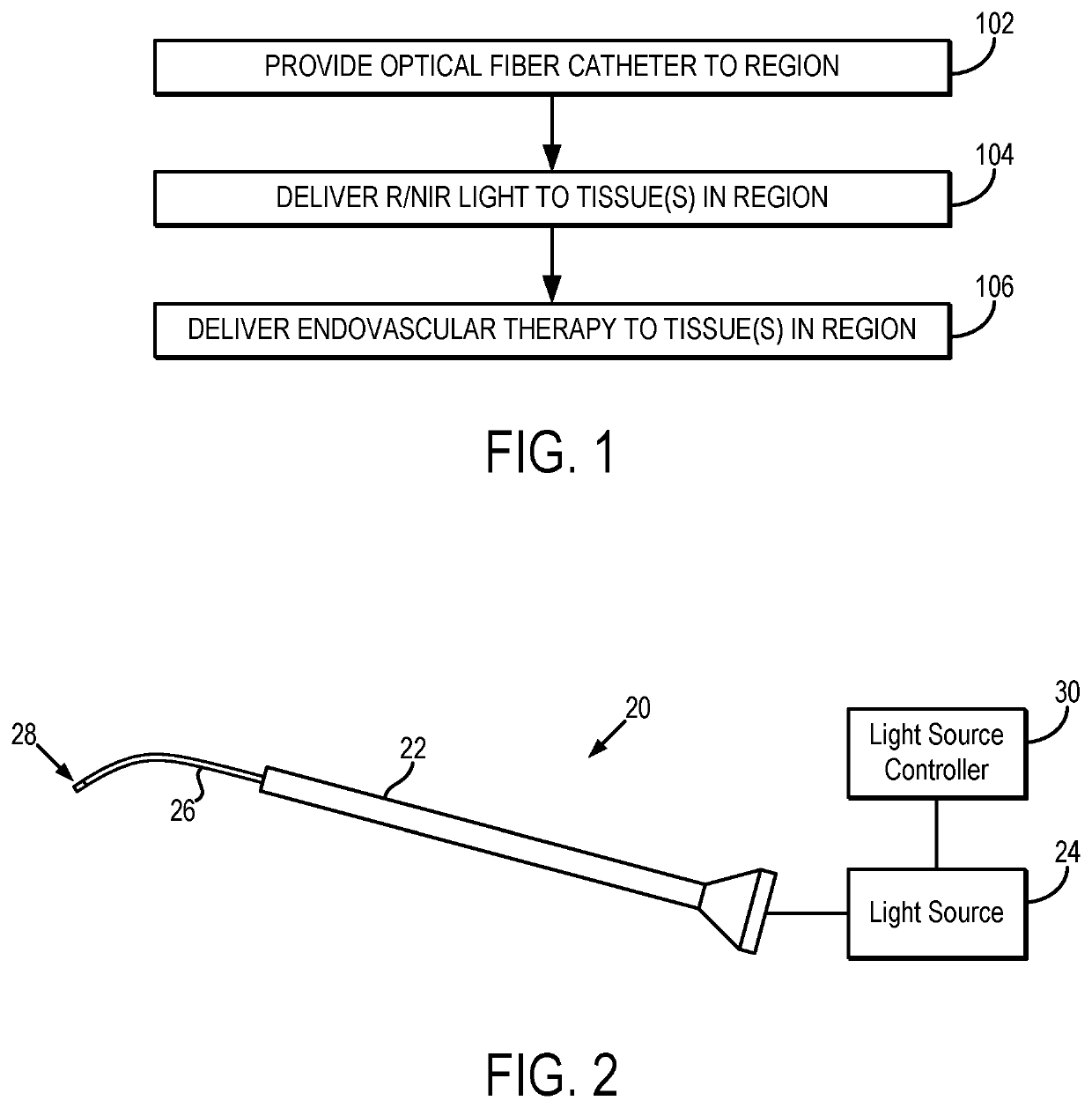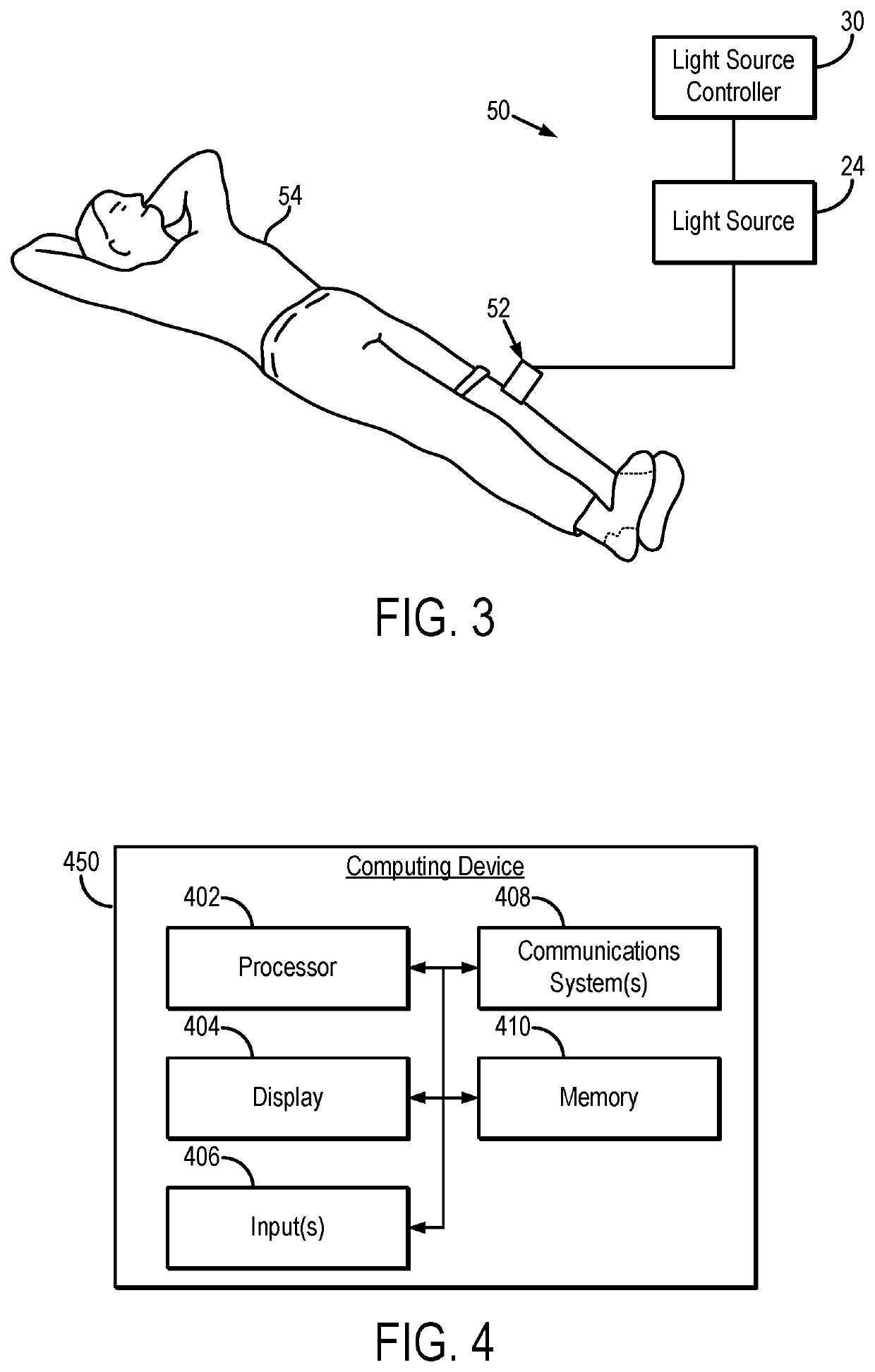Far Red and Near Infrared Light-Mediated Conditioning of Tissues and/or Blood to Prevent Reperfusion Injury in Endovascular Therapies
- Summary
- Abstract
- Description
- Claims
- Application Information
AI Technical Summary
Benefits of technology
Problems solved by technology
Method used
Image
Examples
Embodiment Construction
[0011]Described here are systems and methods for limiting reperfusion injury during endovascular therapies, such as revascularization and / or reperfusion of end organ tissues (e.g., heart, brain, kidney, extremities). In general, an optical fiber catheter or transdermal light delivery system is used to deliver light to tissues for treatment. As a non-limiting example, the optical fiber catheter and / or transdermal light delivery system can deliver multiple wavelength or single wavelength light in order to provide conditioning of an end organ tissue before, during, or after endovascular therapy.
[0012]It is an advantage of the systems and methods described in the present disclosure that by delivering transient temporary application of light at wavelengths in the far red and near infrared (“R / NIR”) spectrum (e.g., 670 nm±160 nm) at the time of endovascular therapy (e.g., clinical revascularization and / or reperfusion) of end organ tissue, reperfusion injury may be limited. Additionally or...
PUM
 Login to View More
Login to View More Abstract
Description
Claims
Application Information
 Login to View More
Login to View More - R&D
- Intellectual Property
- Life Sciences
- Materials
- Tech Scout
- Unparalleled Data Quality
- Higher Quality Content
- 60% Fewer Hallucinations
Browse by: Latest US Patents, China's latest patents, Technical Efficacy Thesaurus, Application Domain, Technology Topic, Popular Technical Reports.
© 2025 PatSnap. All rights reserved.Legal|Privacy policy|Modern Slavery Act Transparency Statement|Sitemap|About US| Contact US: help@patsnap.com


